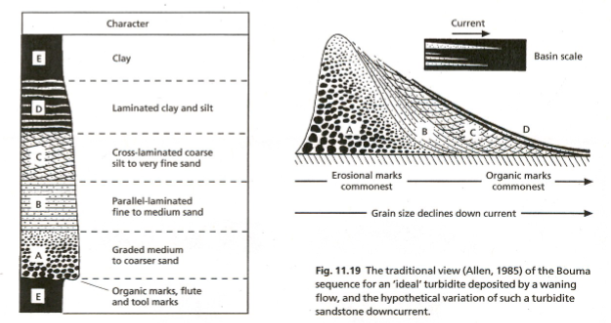Sed Pet Week II
1/51
Earn XP
Description and Tags
sediment
Name | Mastery | Learn | Test | Matching | Spaced |
|---|
No study sessions yet.
52 Terms
Udden-Wentworth scale
Most widely used grade scale by sedimentologists. Each value is either two times larger than the previous value or half as large, depending on direction (clay, silt, sand, gravel)
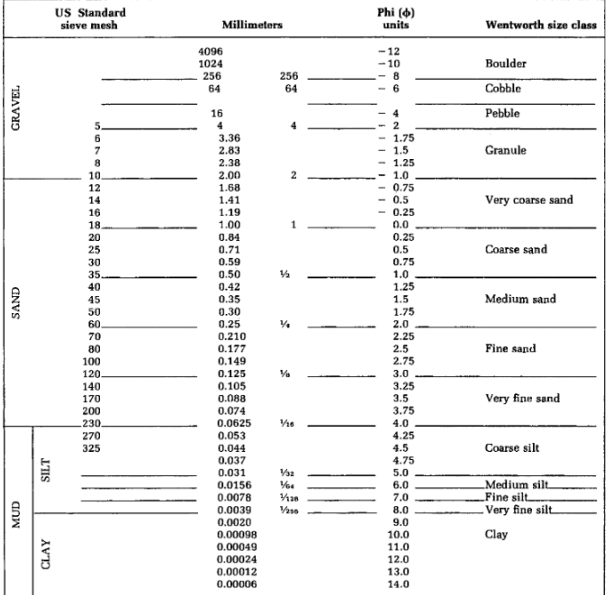
Sieving
Older technique for measuring grain size of sandy sediment. Sandy sediment can also be measured by fall time in a tube of water
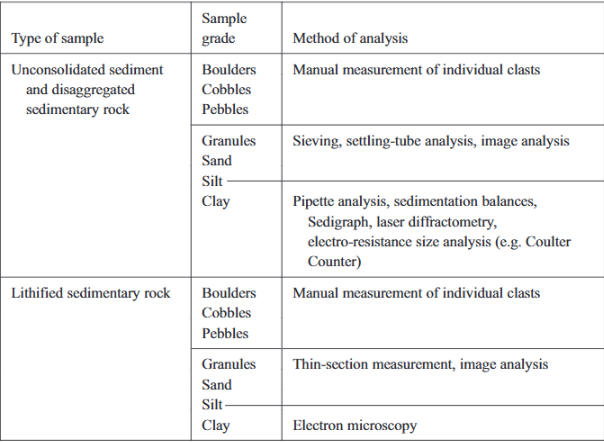
Stoke’s Law
Method for measuring fine-size sediment; through pipette method

Sedimentation balances
fine sediment is
Sediment is continuously weighed as it collects on a pan at the bottom of the settling tube
Sedigraph
Determines the size of particles dispersed in a liquid by measuring the attenuation of a finely collimated X-ray beam as a function of time and height in a settling suspension.
Corpuscle effect
grains cut marginally in a thin-section plane have smaller apparent diameters
Image analysis
a television camera with a special viewing tube is mounted on a petrographic microscope. The camera feeds an image to a high-resolution television monitor
Skewness
additional measure of grain-size sorting that reflects sorting in the tails of the distribution. When plotted as a frequency curve, the grain-size distributions are asymmetrical. The greater the number from zero, the more skewness
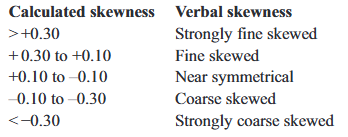
Kurtosis
The sharpness or peaked-ness of a grain-size frequency curve
Form
the gross, overall morphology or configuration of particles. Most measures of form consider the three-dimensional shape of the grains.
Roundness
measure of the sharpness of the corners of a grain, and is commonly measured in two dimensions only
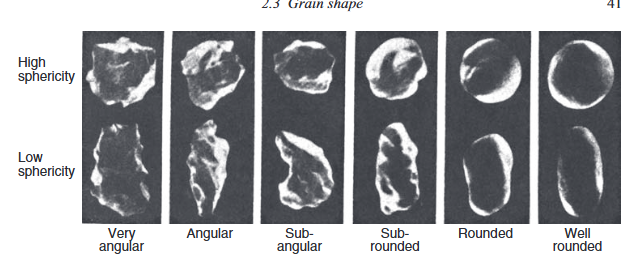
Surface texture
refers to microrelief features, such as scratches and pits, that appear on the surfaces of clastic particles, particularly particles that have undergone transport
Fourier analysis
Used analyze grain shape. Breaks down complex functions or signals into a sum of simpler sinusoidal (sine and cosine) waves, revealing their underlying frequencies and amplitudes. Does not work for highly irregular grains
best material to record surface textural features
Quartz. It is stable at the surface and very hard, so it records textural features well.
Few features are specific to one environment, but V-patterns are common in quartz on beaches and striations are common from dragging (glacial activity) or wind (sand)
Textural maturity of sandstones (guide)
the amount of clay size sediment present
sorting of framework grains
rounding of framework grains
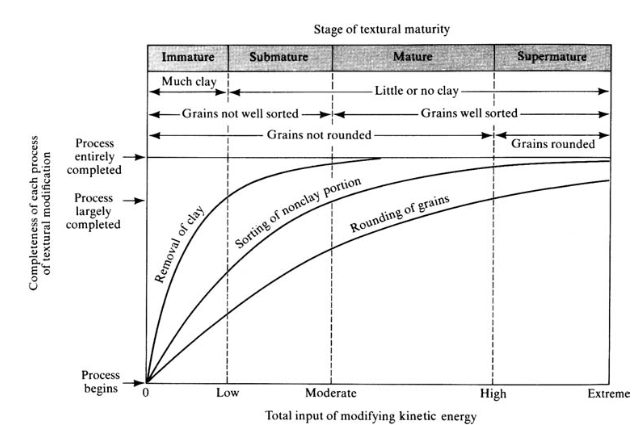

Grain contacts
Contact index (average number of contacts/grain) and tight packing index (average number of long, concavo–convex and sutured contacts/grain)
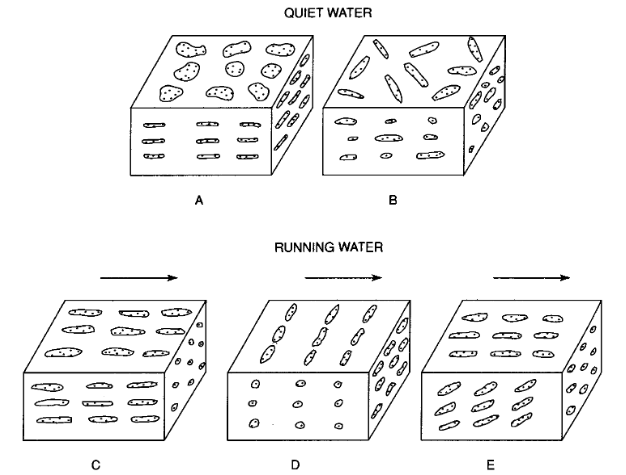
Grain orientation (water)
Particles may be oriented with long or flattened dimensions parallel to bedding but have orientations within the bedding plane that are either parallel to current flow or perpendicular
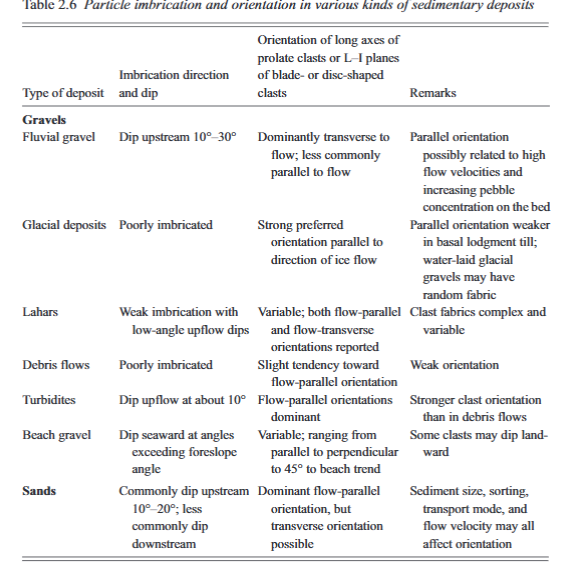
Primary porosity types
Intergranular (interparticle) - pore space between framework grains, like siliciclastic/carbonate grains
Intragranular (intraparticle) - pore space within particles, like cavities in fossils and open space in clay minerals
Intercrystalline - pore space between chemically formed crystals, like dolomites
Secondary porosity types
Solution porosity - caused by dissolution of cements/framework grains in chemically formed rocks
Intercrystalline porosity - pore space in cements or among authigenic minerals
Fracture porosity - fracturing of any type of rock by tectonic forces
Darcy’s Law
the rate of flow of a fluid through a porous rock is directly proportional to the rock permeability and indirectly proportional to the fluid viscosity.

Permeability decreases with
decreasing particle size (clay sediments pack tightly and let fewer fluids through). Particle orientation also matters; parallel or perpendicular to bedding plane
Sphinx mountain conglomerate
Cretaceous. Active foreland fold-thrust belt feeding sediment to basin; limestone and metamorphics. Modern Madison fault is extensional. Progressive unconformity
Progressive unconformity
Progressive thrust faults consume the strata from previous sequences of deformation. Sediment is layered with each new faulting sequence; older beds begin to tilt upwards

Synorogenic sedimentation
Accumulation of sediment that occurs at the same time as a mountain building event
Erosional unroofing
Eroding a sequence from the top down
Guyot
Underwater seamount volcano. Often topped with limestone (carbonates); flat-topped. Undergo early cementation; walls are prone to collapse. Produce thick carbonate breccias
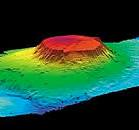
3 parameters that determine stable bedform in unidirectional flow conditions
grain size, flow velocity, flow depth.
Other parameters include m (fluid viscosity), rf (fluid density), rs (grain density, 2.65), and g (gravitational constant, 9.81)
Fundamentals of flow
Laminar v/ turbulent flow
Sub-and super-critical flow
velocity profiles
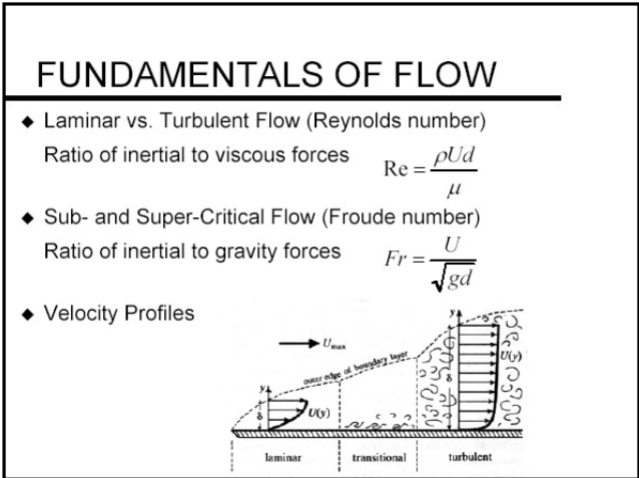
Laminar flow
Smooth movement of particles in parallel layers; typically at low flow rates or with high-viscosity fluids. Unlike turbulent flow, laminar flow maintains organized paths for particles
Turbulent flow
chaotic, irregular fluid motions characterized by swirling eddies and vortices, a high Reynolds number, and a significant mixing of fluid layers
Reynold’s number
a dimensionless quantity that predicts whether a fluid flow will be laminar or turbulent
Re > 2000 = turbulent
Re < 500 = laminar
It takes higher velocity flow to
move heavier particles and effectively erode them. Also, a packed, finely sorted bed of silt would be harder to erode than floating sand grains due to grain surface area (static attraction keeps particles together)
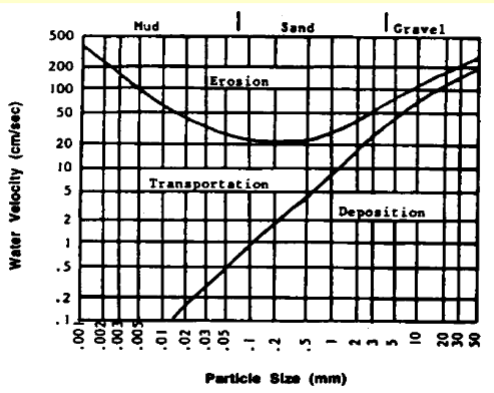
Cohesive v non-cohesive sediment
sticky or non-sticky sediment (eg; sand and gravel do not bed together like mud or silt in water).
Dunes
Akin to large ripples. Wavelengths range from 0.6 m to hundreds of meters. Erosion of stoss side and avalanching of lee side
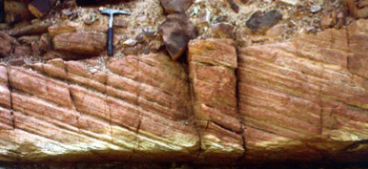
Antidunes
Typically migrate upstream and show little asymmetry. The water surface is strongly in phase with the bed. Commonly seen as train of symmetrical surface waves
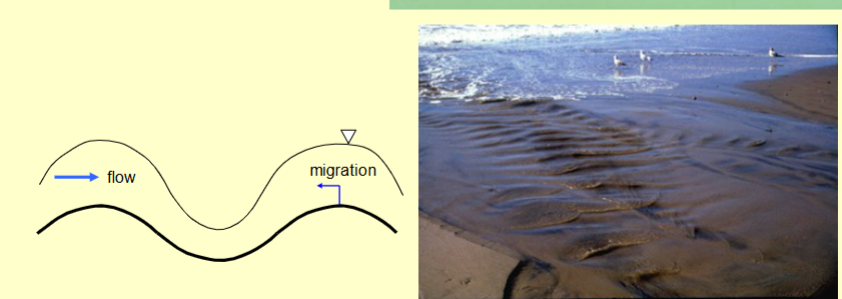
Upper plane bed
Intense sediment transport over a flat bed. High velocity with small grains; produces planar-laminated sand. Seen at beaches.
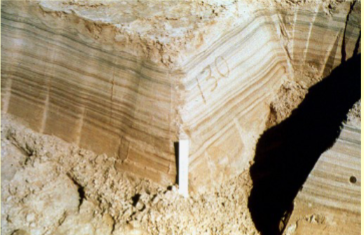
Ripples
current ripples - form in response to unidirectional flow (low velocity)
wave ripples - a flow moving back and forth
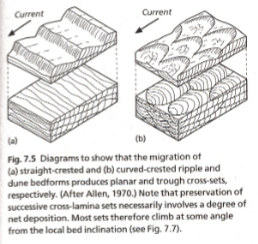
Limiting streamlines (skin-friction)
Lines representing the direction of the wall shear stress vector, which arises from the fluid's friction against the surface. Motion vectors meet at the ripple’s crest
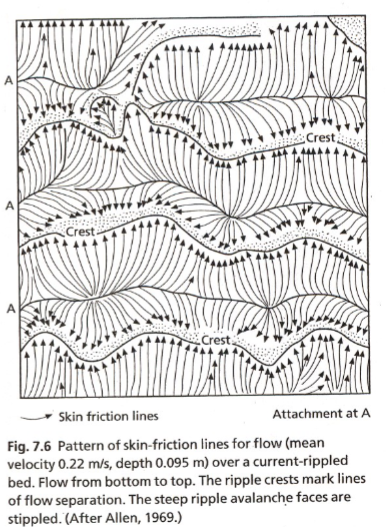
Climbing ripples
formed through aggradation of sediment. Aggradation levels vary depending on type. Subcritical, critical, supercritical. Erosional surfaces separate beds
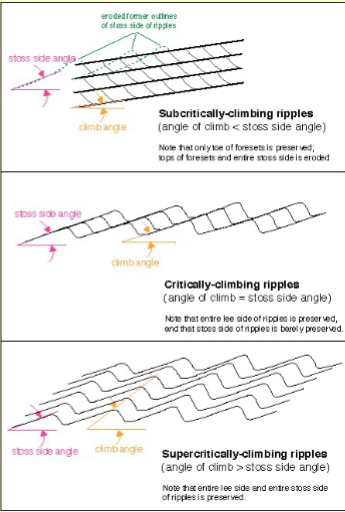
Hysteresis (lag effect)
occurs when the change in the system's response occurs with a time delay to the change of the driving force causing it
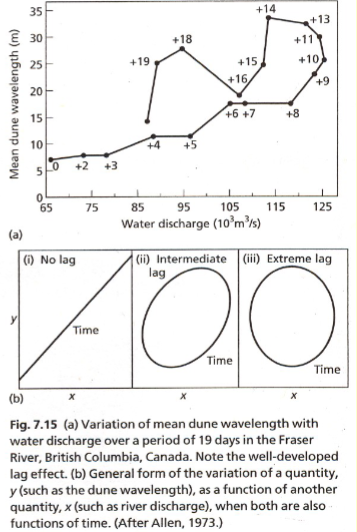
Secondary flow
Any flow not in the direction of the main current (edy)
Shoot and pool structures
Trains of cyclic steps occur in very steep flows with supercritical Froude numbers. The steps are delineated by hydraulic jumps (immediately downstream of which the flow is subcritical)
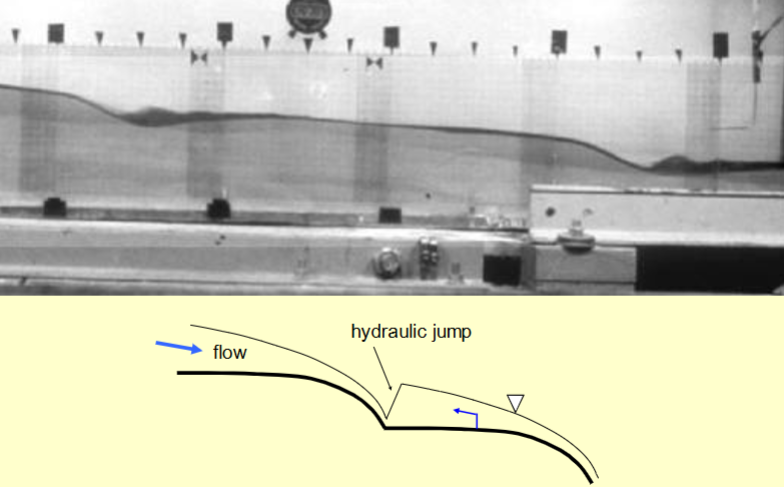
Bedforms in cohesive sediments
Most are erosional; flutes and tool marks (divots), including bounce, skip, groove, and chevron marks
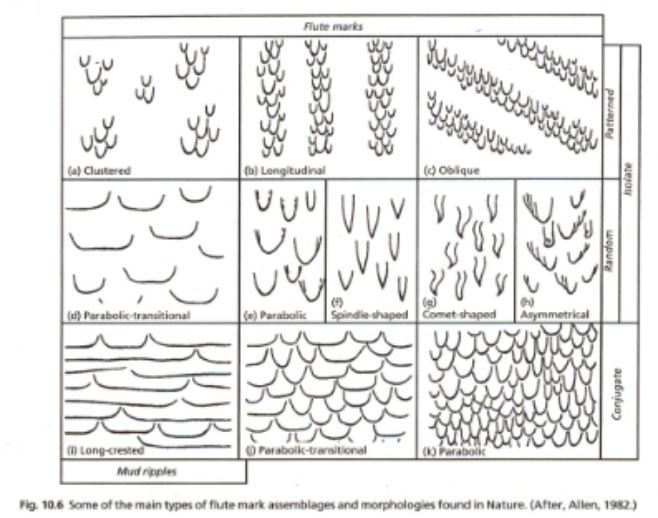
Proximal and distal
Close to and far from the source (near to far). Down gradient movement
Gutter cast
Subaqueous, often associated with storms. Found in marine shelf/lake environments
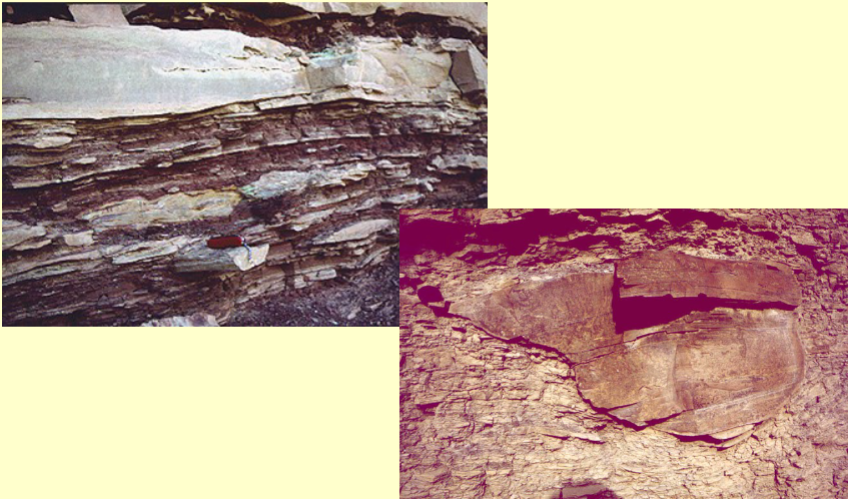
Shrinkage cracks (desiccation)
Shrinking of a muddy layer exposed to the atmosphere (shallow water)
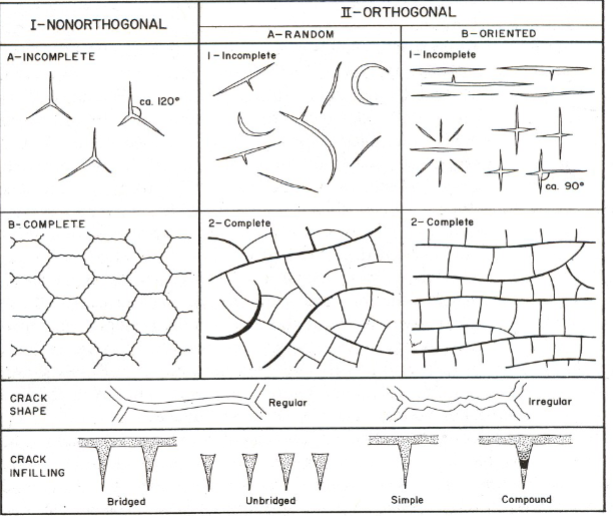
How surface waves bedforms are formed
Surface waves define orbitals which have decreasing width with depth. Shallow water waves reach the bottom, deep water waves do not. Orbitals at the bottom create shear stress that oscillates back and forth as waves pass overhead. This stress will move sediment
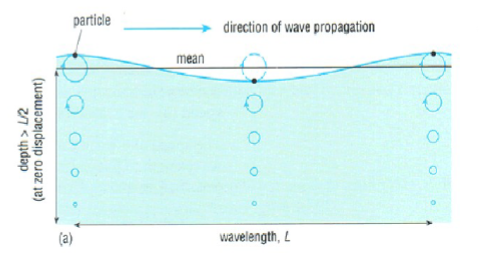
Wave ripples
Sharp crested with broad troughs, symmetrical (often seen in vortex ripples)
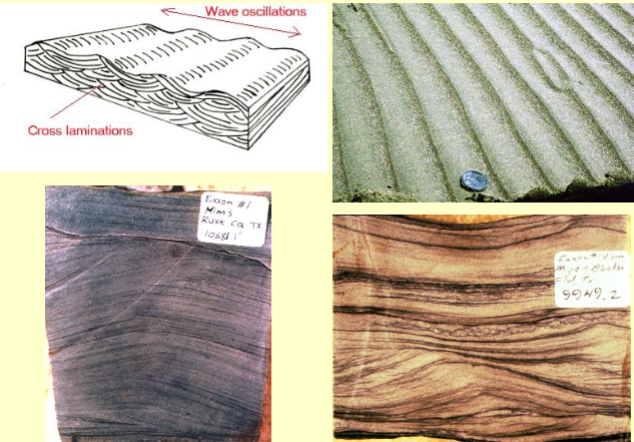
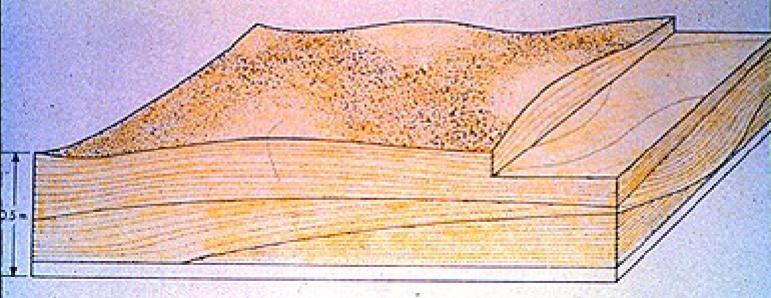
Hummocky cross stratification
Hummocks (concave up) and swales (concave down). <15 degree truncation surfaces. Occurs in fine to medium-grained sand. Produced by combined flow, typically occurs below fair weather wave base by larger waves produced during storms
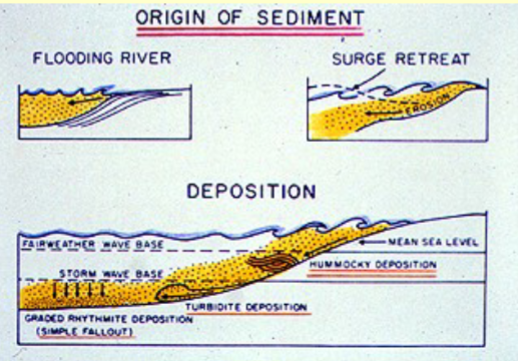
Dune grain flow dynamics
grainflow (along crest of dune), grainfall (side of dune), wind ripple (sand is blown into ripples, backside and base of dune)
laminae coarsen up-dune since larger grains roll faster
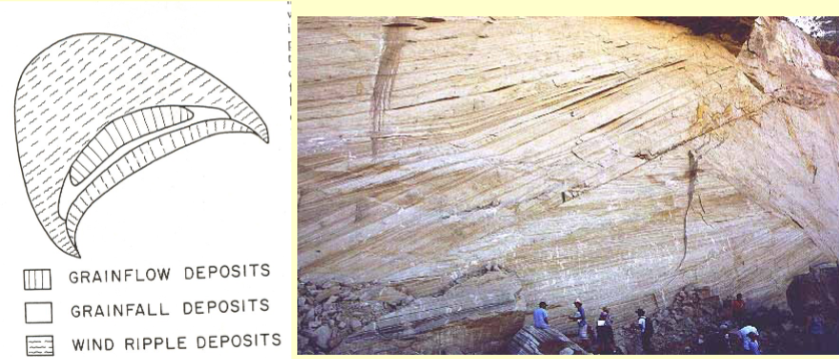
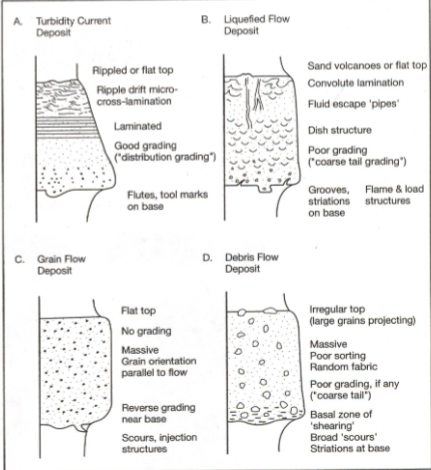
Sediment gravity flows
4 types. Based on support mechanism clasts during sediment flow
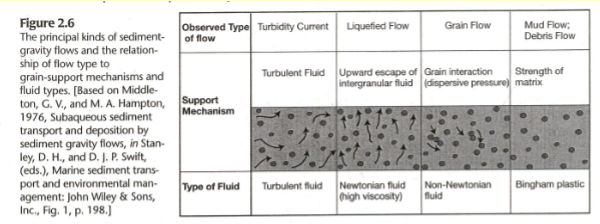
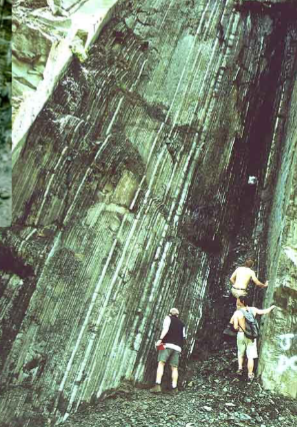
Turbidity current
Particles are kept aloft in the body of the flow by turbulent suspension. Density of flow is greater than that of ambient fluid
both high density and low density turbidity currents exist
sharp erosional base with upward fining; whole sequence rarely preserved
